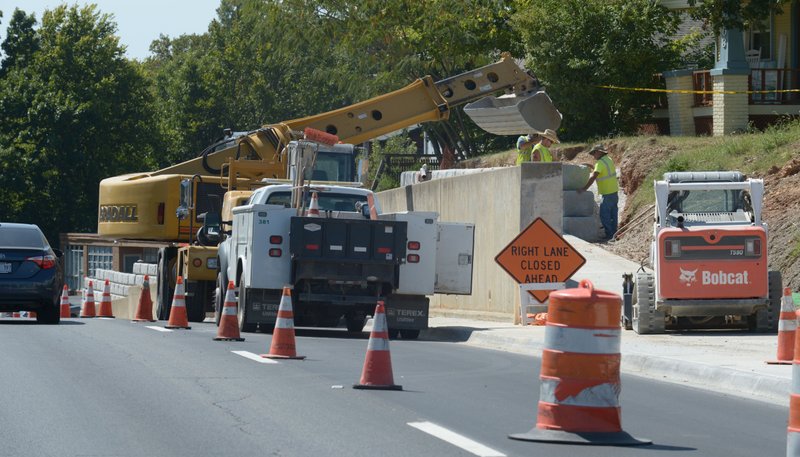FAYETTEVILLE -- A proposal to rezone College Avenue and make changes to the city's development code will make its way to the City Council without a provision limiting residential building height.
The Planning Commission voted 8-0 Monday to pass along to the City Council a proposal creating an overlay district on College Avenue between Maple and North streets. An overlay district requires additional architectural standards on top of what's outlined in a zoning.
Next meeting
What: Planning Commission
When: 5:30 p.m. Nov. 13
Where: Room 219, City Hall, 113 W. Mountain St.
Commissioner Alli Quinlan, who led a subcommittee on rezoning College Avenue, wasn't present at Monday's meeting.
The College Avenue Overlay District would mimic the city's Downtown Design Overlay District. Basically, the intent is to make the stretch of College Avenue look more like an urban, walkable shopping district, Planning Director Andrew Garner told commissioners Monday.
The measure commissioners passed also would change the city's code to measure building height in stories instead of feet. Another aspect would require the ground floor of buildings in the College Avenue Overlay District to be 12 feet tall.
Rezoning College Avenue first came up in April. The proposal has morphed as it has gone through the Planning Commission, City Council and two subcommittees. Residents in neighborhoods near College Avenue showed up at numerous public meetings to voice opposition to the possibility of large, student-occupied apartments going up as a result of the rezoning.
The College Avenue Rezoning Committee, a subcommittee of the Planning Commission, on Thursday touted the latest revision to the proposal as a compromise between neighbors and developers. On Monday, the full commission took out a provision limiting residential building height to three stories.
"College Avenue doesn't have a housing problem, it's got a gas stations and strip clubs problem," Commissioner Matt Hoffman said.
The Downtown Design Overlay District doesn't specifically limit building height, but the City Council made a number of revisions to the code in 2014 to make urban residential design standards better fit the city's goals. Building height is limited under a parcel's zoning.
Hoffman said the architectural requirements outlined in the overlay district should allay the concerns of neighbors.
"The downtown overlay district design standards are the most powerful design tool that we currently have in the city," he said. "And they are not anywhere near this particular area right now."
The rezoning would put most of the street-facing lots on College Avenue between Maple and North streets under an urban thoroughfare or community services zoning.
Under urban thoroughfare, a building more than 15 feet from the street would have a maximum height of seven stories. Buildings within 15 feet of the street would have a five-story limit. Community services has a five-story building height limit.
Most of College Avenue now is zoned under thoroughfare commercial, which has a 75-foot building height limit, which translates to just more than six stories. Residential uses aren't allowed in the thoroughfare commercial zoning.
At one point, the College Avenue subcommittee had proposed limiting building height across the city to three stories unless buildings met certain criteria.
City staff felt like making such a sweeping change without a more involving public process wouldn't be appropriate, and the idea was scrapped, Garner said. The three-story cap idea came out of neighbors' concerns about tall, single-use residential buildings right next to their homes, he said.
"That's a lot of what planning is, really, is trying to take all of the different interests from all of the different parties and come up with something that meets the goals of the city, that includes what the adjoining property owners in the neighborhood were talking about," Garner said.
The City Council will have the final say on the proposal. City staff will place signs in the affected areas and send letters to neighbors to give the public an opportunity to provide input, Garner said.
NW News on 10/24/2017
